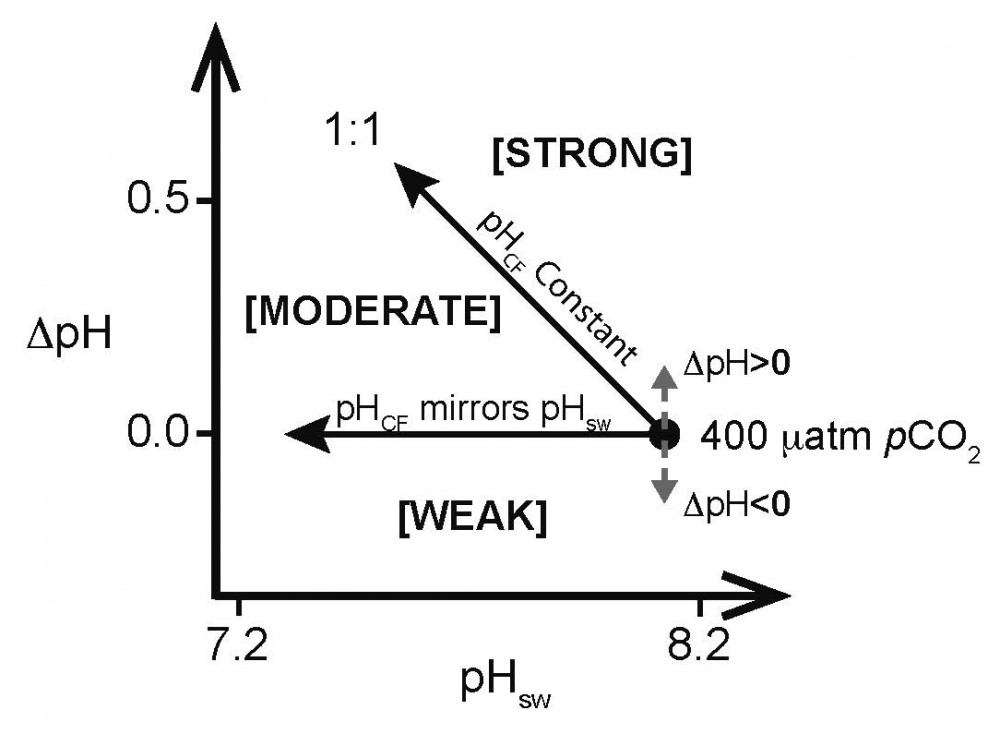本所博士後研究劉怡偉與其國際合作團隊利用測量生物碳酸鈣中的硼同位素,首次同時針對十種不同種屬海洋造殼生物,討論生物內部酸鹼值在面臨海洋酸化的環境下的變化。研究結果顯示,雖然生物體內造殼微環境在不同外在海水酸鹼度下的變化分歧,而且並未和造殼量的變化有明顯相關,但不同種屬下的十種生物都顯示其會將體內酸鹼值提高於體外海水的酸鹼度,以利於碳酸鈣殼體或骨骼的生長。除此之外,十種生物內有九種生物在大氣二氧化碳濃度越高、海水越酸的環境下,提高體內酸鹼值的程度越高。硼同位素結果首次佐證了,雖然生物殼體內的酸鹼度不是控制生物造殼程度的主要原因,但不同生物門下的海洋生物在面對海洋酸化的影響下,都有調節體內酸鹼度的能力。 該結果最近發表於《Science Advances (科學前緣)》期刊。doi: 10.1126/sciadv.aax1314

Schematic diagram of the “pH control envelope” to aid interpretation of ΔpH trends as a function of pHsw.
The upper boundary of the pH control envelope is defined by a 1:1 relationship between ΔpH and pHsw, such that pHCF remains constant regardless of pHsw. The lower boundary is defined by the scenario in which ΔpH remains fixed regardless of pHsw, such that changes in pHCF track changes in pHsw. The envelope therefore describes three categories of pHCF control: weak control at or below the lower bound of the envelope, moderate control within the envelope, and strong control at or above the upper bound of the envelope. The apex of the envelope is translated up or down relative to ΔpH = 0 if pHCF is respectively greater or less than pHsw under control pCO2 conditions. Our results suggest that all 10 species elevate their calcification site fluid pH to above seawater pH under elevated atmospheric CO2.
[全文連結][本院院訊漫步科研專欄]